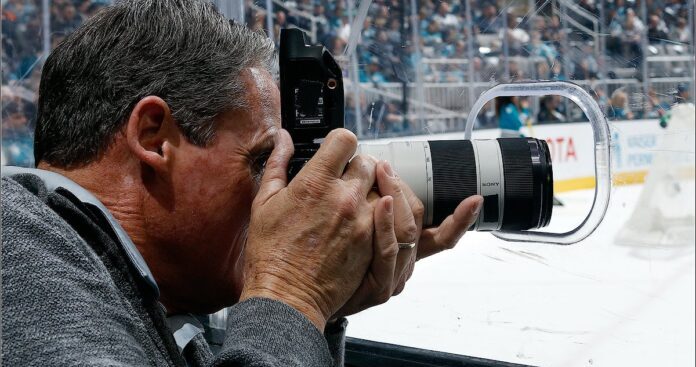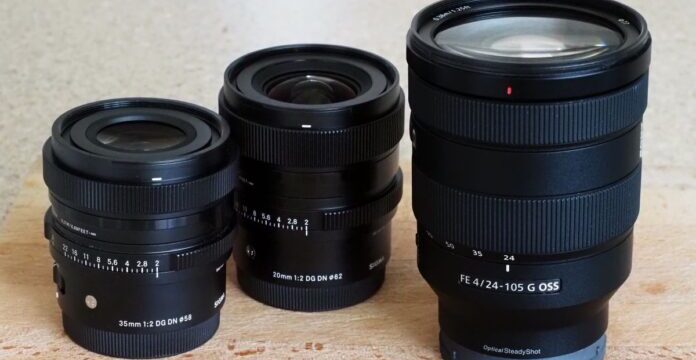
In the fast-paced world of sports photography, missing a shot is not an option. The thrill of the game, the roar of the crowd, and the athletes’ raw emotion all culminate in moments that are as fleeting as they are magnificent. Capturing these instants requires not only skill but also the right equipment.
While cameras themselves get a lot of attention, the unsung hero in this setting is often the lens attached to it. But not just any lens will do. If you’re looking to up your sports photography game, you’ll want to consider stepping up to prime lenses.
Prime lenses have been making waves in the photography community for their exceptional optical quality and creative versatility. This article aims to delve deep into why prime lenses have become an indispensable tool for capturing the action-packed world of sports.
From their unparalleled image clarity to their stellar low-light capabilities, we’ll discuss why these lenses could be the game-changing gear you’ve been looking for.
The Basics of Prime Lenses

Understanding the mechanics and features of prime lenses is crucial before we delve into why they’re a game-changer for sports photography. Let’s break down the nitty-gritty, shall we?
Definition of a Prime Lens
In the simplest terms, a prime lens is a camera lens with a fixed focal length. Unlike zoom lenses, which allow you to change focal lengths on the fly, a prime lens has one set length. You might wonder, “Why would I limit myself?” But as you’ll see, sometimes limitations can be liberating—and the benefits numerous.
Key Features of Prime Lenses
Fixed Focal Length
The fixed focal length is both a constraint and a virtue. You won’t have the luxury of zooming in and out with a twist of your wrist. Instead, you’ll need to “zoom with your feet,” meaning you’ll physically move closer or further away from your subject.
Though this may sound cumbersome, it often leads to more thoughtful composition and framing, essential skills in capturing the essence of high-action sports.
Wide Apertures

One of the standout features of prime lenses is their wide aperture, often ranging from f/1.2 to f/2.8. A wide aperture lets in a lot of light, which is indispensable in challenging lighting conditions, such as poorly lit indoor arenas or evening games.
The ability to use faster shutter speeds without compromising on image quality is a significant boon for sports photographers.
Short History of the Development of Prime Lenses
Though it might seem like prime lenses are a modern marvel, they’ve been around for quite some time. The origin of prime lenses dates back to the early days of photography when all lenses were fixed focal lengths.
Over time, technological advancements have made them more efficient and sophisticated, but the core principles have remained the same: simplicity, quality, and creative freedom.
Advantages of Prime Lenses in Sports Photography

If you’ve made it this far, you might be starting to see why prime lenses are garnering so much attention, especially for sports photography. Let’s break down the advantages, one snapshot at a time.
Image Quality
When it comes to delivering stunning, high-resolution images, prime lenses often have the upper hand over their zoom counterparts. One reason is the simpler optical design of prime lenses, which often results in sharper, clearer images. But don’t just take my word for it; authoritative sources like DPReview have consistently ranked prime lenses highly for their superior image quality.
Low-Light Performance
No floodlights? No problem. Prime lenses are often your best ally in low-light situations, thanks to their wide aperture capabilities. With apertures like f/1.8 or even f/1.4, you can capture crisp, clear images even in the dim lighting of indoor arenas or dusk-time matches. And let’s be honest, when the sun goes down, the real game often starts to heat up.
Speed and Auto-focus

The action in sports is fast-paced, leaving no room for blurry or missed shots. This is where prime lenses, with their wider apertures, allow for faster shutter speeds. Coupled with advanced auto-focus systems, prime lenses enable you to capture those critical milliseconds of a slam dunk or a soccer goal with precision and ease.
Creative Control
Bokeh lovers, unite! The wide aperture of a prime lens allows for a shallower depth of field, providing a creamy, out-of-focus background (known as bokeh). This is perfect for isolating your subject, like a player in action, against a distracting background—making your subject the uncontested MVP of your photo.
Portability
Remember, the best lens is the one you have with you. Prime lenses are often more compact and lighter than zoom lenses, making them easier to maneuver in tight or crowded spaces. Because when you’re ducking and weaving through fans, players, and possibly mascots, every ounce counts.
Max Lytvyak recommends some really great options of the best Canon lenses for sports, which include prime lenses that perfectly complement the needs of a sports photographer. Lightweight, versatile, and high-quality—what more could you ask for?
Commonly Used Prime Lenses in Sports Photography

While the world of prime lenses is vast and varied, there are a few focal lengths that have proven to be particularly effective for capturing the essence of sports events. These lenses are the bread and butter—or perhaps we should say, the “shutter and aperture”—of many sports photographers. Let’s break them down:
35mm for Wide Shots
In sports, context is everything. Sometimes you need to capture the atmosphere, the stadium, and the crowd to convey the full scope of an event. That’s where a 35mm prime lens comes in. The wide-angle view is perfect for capturing expansive shots that tell a story beyond the players themselves. It’s like having a wide receiver in your lens lineup—able to cover a lot of ground quickly!
50mm for General Use
Often referred to as the “nifty fifty,” a 50mm lens is the all-rounder of prime lenses. Its field of view closely mimics that of the human eye, making the photos appear natural and intuitive. If you’re new to the world of prime lenses or sports photography, this lens is an excellent starting point. It’s the midfield general, good at everything but master of none, and sometimes that’s exactly what you need.
85mm or Higher for Close-Ups
When you need to get up close and personal with the action, an 85mm prime lens (or higher) should be your go-to. This lens allows you to capture the raw emotions, the sweat, and the intensity on the players’ faces without having to be on the field yourself. Think of it as the sniper of your lens arsenal—precise and impactful.
When to Choose Zoom Over Prime

As much as we’ve sung the praises of prime lenses, it’s crucial to acknowledge that they’re not a one-size-fits-all solution. There are situations where the versatility of a zoom lens may outweigh the advantages of a prime lens. Let’s look at some scenarios where zoom lenses get the upper hand:
Discussing the Limitations of Prime Lenses
While prime lenses offer impeccable image quality and low-light performance, they do come with limitations. The fixed focal length requires you to physically move closer or further away from your subject, which can be problematic in dynamic or unpredictable sports environments.
Scenarios Where a Zoom Lens May Be More Beneficial
- Dynamic Ranges: In sports like basketball or soccer where the action covers a wide area, having the flexibility to zoom can be advantageous.
- Variable Positions: If you’re stationed at a spot where you can’t easily move—say, in a crowded stadium—a zoom lens can be a lifesaver.
- Multiple Subjects: When you’re capturing various subjects at different distances, such as players, the crowd, and sideline events, a zoom lens offers the versatility you need.
A Balanced View to Help the Reader Make Informed Choices
While prime lenses have their set of advantages, it’s essential to have a zoom lens in your toolkit for scenarios that demand versatility. Often, sports photographers carry both types of lenses to be prepared for any situation.
Conclusion
In the world of sports photography, capturing the perfect shot often comes down to a combination of skill, timing, and the right equipment. Prime lenses, with their unparalleled image quality, speed, and creative control, offer unique advantages that can turn those almost-great shots into unforgettable captures.
While they may not be suitable for every scenario, their benefits in image quality, low-light performance, and creative control make them a game-changing tool in a sports photographer’s arsenal. So the next time you’re packing your camera bag for a day at the games, consider making room for a prime lens or two—you might just find that it’s your new MVP.








